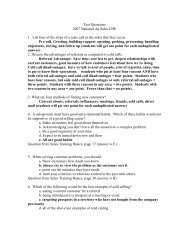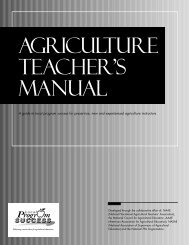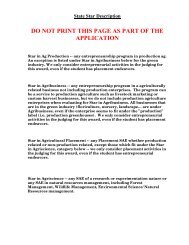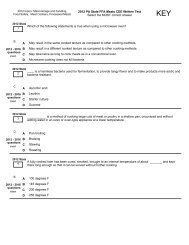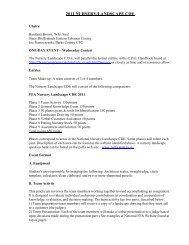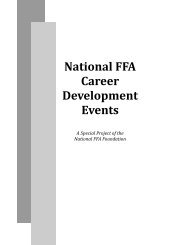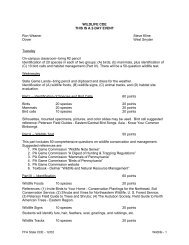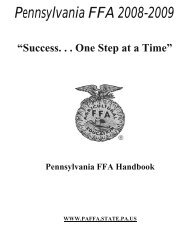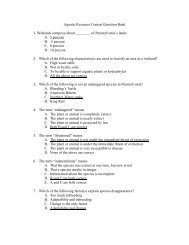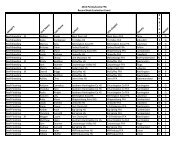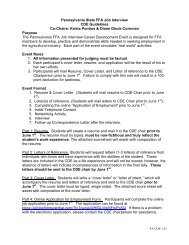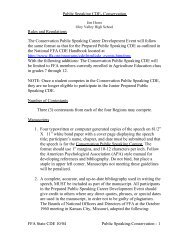2012 NATIONAL Farm Business Management CDE - Pa FFA
2012 NATIONAL Farm Business Management CDE - Pa FFA
2012 NATIONAL Farm Business Management CDE - Pa FFA
Create successful ePaper yourself
Turn your PDF publications into a flip-book with our unique Google optimized e-Paper software.
<strong>Farm</strong> <strong>Business</strong> <strong>Management</strong> Career Development Event <strong>2012</strong>-2016Appendix B: Related Academic StandardsNational academic standards for mathematics, science, English language arts and social studiesrelated to this event are reported below. The statements are based on information in reports ofthe respective associations/organizations in the academic areas. Some adjustment of numberingwas done to facilitate the process of alignment with the standards that have been developed inthe pathways of the Agriculture, Food and Natural Resources (AFNR) Career Cluster.The approach was to determine the presence of alignment between the content standards,expectations or thematic strands of the four academic areas and the performance indicators ofthe AFNR Standards. Supporting statements have been included to clarify content of therespective content standards, expectations or thematic strands. The statements were initiallydeveloped independently by the respective organizations and, therefore, are not parallel inwording and presentation. Occasionally minor editing was done to adjust the background orstem of a statement but not the statement itself.Mathematics1. Standard and Expectations: Number and Operations1C. Compute fluently and make reasonable estimates.5. Standard and Expectations: Data Analysis and Probability5A. Formulate questions that can be addressed with data and collect, organize and displayrelevant data to answer them.5C. Develop and evaluate inferences and predictions that are based on data.6. Standard and Expectations: Problem Solving6B. Solve problems that arise in mathematics in other contexts.6C. Apply and adapt a variety of appropriate strategies to solve problems.ScienceA. Content Standard: Science as an InquiryA1. Identify questions and concepts that guide scientific investigation.A4. Formulate and revise scientific explanations and models using logic and evidence.A5. Recognize and analyze alternative explanations and models.English Language Arts3. Students apply a wide range of strategies to comprehend, interpret, evaluate and appreciatetexts. They draw on their prior experience, their interactions with other readers and writers,their knowledge of word meaning and of other texts, their word identification strategies andtheir understanding of textual features (e.g., sound-letter correspondence, sentence structure,context, graphics).4. Students adjust their use of spoken, written and visual language (e.g., conventions, style,vocabulary) to communicate effectively with a variety of audiences and for differentpurposes.5. Students employ a wide range of strategies as they write and use different writing processelements appropriately to communicate with different audiences for a variety of purposes.6. Students apply knowledge of language structure, language conventions (e.g., spelling andpunctuation), media techniques, figurative language and genre to create, critique and discussprint and non-print texts.7. Students conduct research on issues and interests by generating ideas and questions, and byposing problems. They gather, evaluate and synthesize data from a variety of sources (e.g.,print and non-print texts, artifacts, people) to communicate their discoveries in ways thatsuit their purpose and audience.<strong>Farm</strong> <strong>Business</strong> <strong>Management</strong> Career Development Event 15



